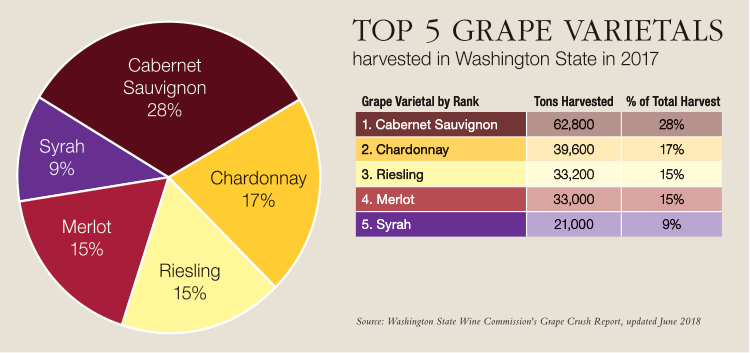Six new AVAs on the horizon, a stellar vintage for white wines, greener packaging and new winery management are among key trends shaping the state’s wine industry
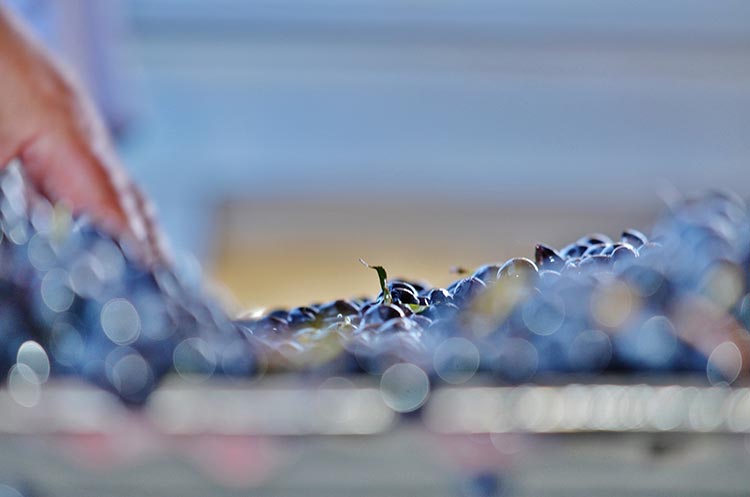
WASHINGTON saw its sixth straight warm vintage in 2018. Near perfect weather conditions in September and October capped off the growing season, with winemakers expecting high quality wines to result. Here’s a look at some of the trends we saw this year in the state’s wine industry.
Cabernet Sauvignon Continues To Drive Growth
In late 2017 the state completed its latest grapevine acreage study, the first since 2011. There were a number of eye-popping findings, foremost of which was an 81% increase in plantings of Cabernet Sauvignon over a seven-year period. Driven by Cabernet, red grape plantings in general increased by 43%, with white varieties growing more modestly in the low single digits. Overall, grapevine acreage in the state was up more than 25% this decade.
This leads to the conclusion that Washington is increasingly becoming Cabernet country, a strong trend that will continue in the coming years. Furthermore it’s clear the state is tilting increasingly towards becoming a red wine dominated state. Expect red wine grape plantings to continue to rise in the coming years.
Six New AVAs On The Horizon
Washington currently has 14 different appellations, a term for a federally approved growing region that can be put on a wine label (for example, Columbia Valley). If all goes well, that number looks to dramatically increase around the end of this decade.
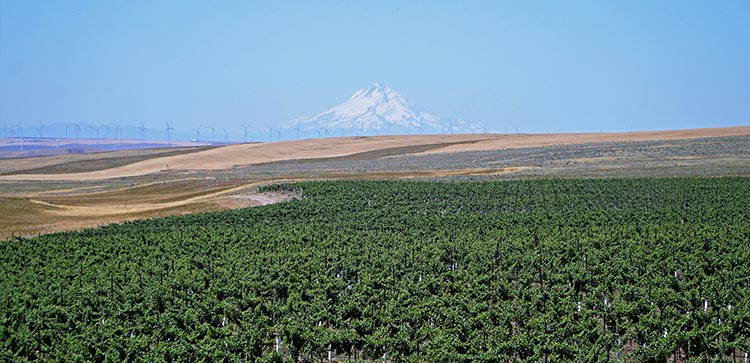
There are currently six newly proposed appellations in the review process with the federal government. They are as follows (listed in the order the applications were submitted): Candy Mountain, Royal Slope, The Burn of Columbia Valley, White Bluffs, Goose Gap and Rocky Reach.
Why the flurry of newly proposed appellations? Growers and winemakers are looking for increased specificity on their wine labels and are looking to differentiate themselves from the broader umbrella of the Columbia Valley AVA growing region. The review process typically takes several years, but keep an eye out for wine bottles with newly-minted Washington appellations on your local retail shelves in the years to come.
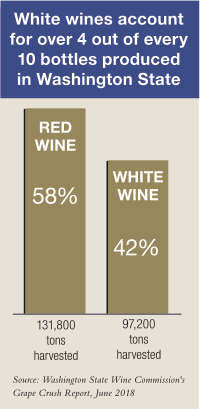 A Standout Year For White Wines
A Standout Year For White Wines
A series of warm vintages have at times challenged white wine production but the 2017 growing season flipped this script. Due to a confluence of circumstances, including wildfire smoke which acted as a filter to the sun, along with cooler harvest in September and October, it was a bounce-back year for Washington whites.
Washington’s 2017 white wines boast intensity of flavor, but pair it with lively acidity. The result is the best white wine vintage so far this decade. The only drawback, due to decreased harvest numbers, is there will be somewhat less of these wines to go around.
Changing Hands
With a number of winery founders approaching retirement age or seeking to move on to other projects, there have been numerous winery sales. At the beginning of the year, Vintage Wine Estates from California purchased Walla Walla Valley stalwart Tamarack Cellars. Around the same time, Willamette Valley Vineyards from Oregon purchased Maison Bleue Winery. There are rumblings of other sales large and small on the horizon.
There is no question that Washington State “branding” is on the rise, evidenced by the strong interest from players outside the state. As the industry matures, expect to see other wineries under new management.
Growers Seeking Higher Ground
Faced with a warming climate that in some years has pushed the harvest season from its traditional Labor Day start into the middle of August, an increasing number of Washington winegrowers are exploring ways to slow down grape maturation.
One way that is becoming increasingly common is planting at higher elevation sites. High-elevation vineyards offer the advantages of cooler daytime high temperatures, which aid decreased sugar accumulations and results in lower alcohol wines. A handful of growers across the Columbia Valley, but particularly in the Red Mountain and Walla Walla Valley appellations, have already begun exploration in this area.
Oregon and Washington Swap Fruit
For Washington winemakers, Oregon—and specifically the Willamette Valley—has always held allure with its ability to produce world-class Pinot Noir. Similarly, for Oregon winemakers, Washington’s mastery of Bordeaux and Rhône varieties brings appeal.
It comes as no surprise then that numerous Washington winemakers have begun crafting Pinot Noirs from the Willamette Valley. At times these wines have been an extension of the winery’s offerings or perhaps club wines. Other times they have been launched as stand-alone brands. At the same time, an increasing number of Oregon-based winemakers are crafting wines from Washington fruit.
With Washington and Oregon largely producing complementary wine offerings, there are natural synergies to be found. Expect more cross-border winemaking going forward.
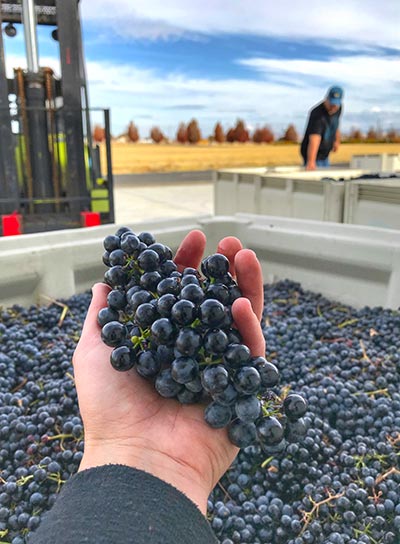
Walla Walla Boomtown
The Walla Walla Valley continues to bloom. Late last year, a California real estate investment trust called Farmland LP purchased 6,000 acres of land on the western edge of the Walla Walla Valley. While some of this land will be used for other crops, an estimated 1,600 acres have the potential to be planted to vineyards. If this occurs, it will increase the valley’s wine grape acreage by over 50%.
At the same time, a number of other investors have entered the region. Perhaps most prominently, fifth-generation Spanish winery Bodegas Valdemar will be opening a new winery called Valdemar Estates in spring of 2019. Their blueprint includes several new vineyards in the area. This international investment is strong validation of the Walla Walla Valley and overall Washington brand. Walla Walla has been a boomtown since the turn of the 21st century.
 Orange Wine
Orange Wine
For several years now, the wine world has seen a prominent rise of a previously obscure style of vino: orange wines. Typically, white wine grapes see little to no skin contact during crush. However, when the fermenting wine juice is left on its skins for longer periods of time, the wines take on an orange hue and richer, more complex flavors. The technique dates back to 8,000 BC and was a favorite among Romans.
Woodinville’s Two Vintners has been at the forefront of orange wines in Washington, making the first vintage of its “O.G.” (orange Gewürztraminer) back in 2013. More recently, a number of other wineries such as Savage Grace and Liberty Lake Cellars have joined the fray.
Are more Washington wines going to be turning orange? Yes and no. Given the curiosity of many Washington winemakers, there are sure to be more orange wines in the marketplace. That said, this will always remain a highly niche market for the state.
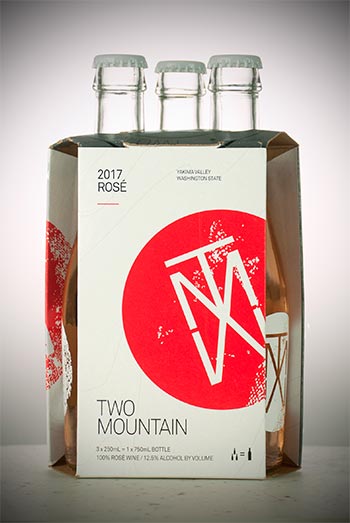
Greener Packaging Alternatives
For many decades, natural cork has been the wine closure of choice. However, due to issues of cork taint—a contaminant in a percentage of natural corks—as well as issues with consistency, an increasing number of wineries have turned to alternatives.
While the adoption of screwcaps has been relatively low in Washington, they still command a percentage of the market. More recently, cork alternatives, such as agglomerative corks and synthetic corks have been growing in popularity.
The innovations don’t stop where the cork ends. A large number of Washington wineries have dispensed altogether with the foil capsule on the top of the bottle. Other wineries have moved beyond the bottle to produce canned wine offerings.
The goal in all cases is to give consumers a more consistent and potentially greener final product.
We can all raise a glass to that.
Written by Sean P. Sullivan
Sean is editor of Washington Wine Report, an independent blog on the wines of Washington State founded in 2007. He writes for magazines that include Wine Enthusiast and Vineyard & Winery Management. Sullivan resides in Seattle, Washington.

